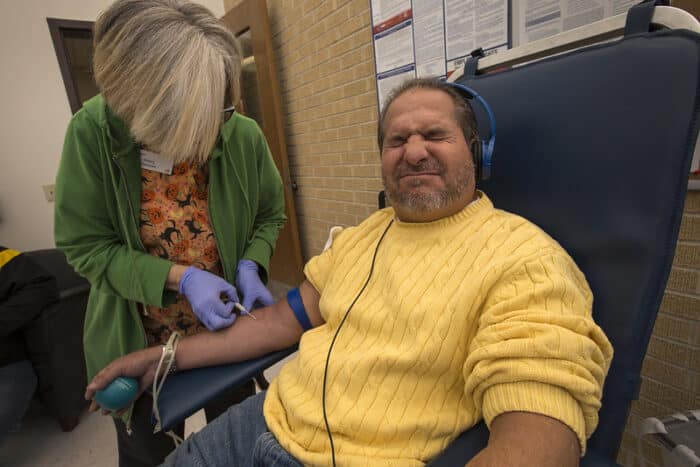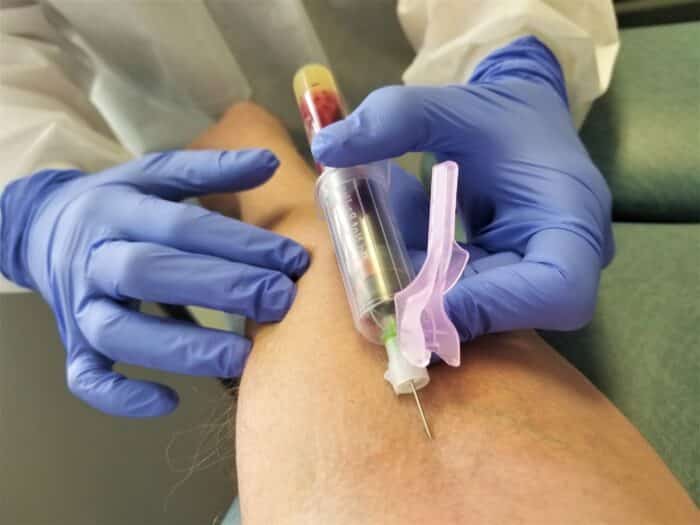Are you interested in pursuing a career in the rewarding healthcare field, but are unsure after coming across the amount of money and time you will need to spend on schooling?
If yes, don’t worry, there’s a popular career you might have missed out on.
Phlebotomy, which is the profession of drawing blood, is the perfect entry point in healthcare, simply because you don’t need a degree or have to spend thousands of bucks to enter the workforce.
If you’re an aspiring phlebotomist, you might have encountered the term ‘order of draw’.
Even though this term may sound like a complex protocol, in this article, we will break down what it means and why it is an important part of phlebotomy.
So, let’s get started!
What is the Phlebotomy Order of Draw?
Phlebotomy is the process of people taking your blood for medical reasons, like tests. They have to be really careful to keep you safe and make sure the tests are right.
This is why they use a specific order to collect different blood samples so that they don’t mix them up, called the ‘Order of Draw’. This way, they avoid mistakes that could cause problems for you and make you worried.
Read: What is a Phlebotomist
Mnemonic to Remember Order of Draw for Phlebotomy
Many students find it useful to use a memory trick to remember the order of blood collection tubes. Here’s a simple one to help you:
“Stop Lights Protect Green and Red Kids”
S – Sterile tubes: These are where we collect blood cultures to keep them free from contamination.
L – Light blue tubes: These have anticoagulants and are used for tests like PT and APTT.
P – Plain red tubes: These are for serum testing and have no additives.
G – Green tubes: These are for tests that need heparin as an anticoagulant.
R – Royal blue tubes: Used for tests like complete blood count (CBC) and comprehensive metabolic panels.
K – Lavender tubes: Used for tests like CBC, ESR, and hematology tests.
G – Gray tubes: These have preservatives and are typically used for glucose and lactic acid testing.
Read More: How to Become a Phlebotomist
Top Things to Keep in Mind
When drawing blood, getting the order right is super important. Here are some important things to keep in mind:
1. Don’t forget any steps when collecting blood samples. Use a helpful memory trick to make sure you do everything in the right order.
2. Make sure to use separate needles and holders for different tubes. This way, you won’t mix up the samples by mistake.
3. Put labels on the tubes that have all the right info, like the patient’s details, the date, and the time.
4. Before you take any blood, make sure you’re working with the right person by checking their information.
5. Follow safety rules to keep yourself and the patient safe.

Do You Want To Become a Phlebotomist? Check Out Free Phlebotomist Masterclass!
In our masterclass you learn:
- How to be a Phlebotomist faster…in just 2 months!
- Avoid student debt & driving to classes
- #1 thing employers want from Phlebotomists
- How to stand-apart & get a university certificate for a strong resume
Why is the Order of Draw Important in Phlebotomy?
Now to come to the real question that you might have been curious about since the start of this article- ‘Why is it so important to draw blood in a specific order?’
The order matters a lot, and here’s why:
- Keeping Patients Safe: Following the right order prevents mixing up blood samples, ensuring that test results are accurate. This is important for diagnosing and treating medical conditions correctly.
- Making Sure Samples Are Good: Using the correct order helps avoid mistakes, so you won’t have to draw blood again. Getting poked with needles multiple times is painful and stressful for patients.
- Working Faster: When everyone follows the same order, the process becomes quicker and more efficient. This saves time for both you and the patient.
- Being Professional: Following the order shows that you’re skilled and committed to your job, which builds trust with patients and colleagues.
Conclusion
In phlebotomy, the order in which you draw blood might seem minor, but it’s really important. It makes sure the samples are right, safe, and quick.
Whether you’re learning or working as a phlebotomist in the USA, remember the phrase “Stop Lights Protect Green and Red Kids.” It helps you know the right order.
Related Resources:
- Phlebotomist Salary
- Phlebotomist Skills
- Ultimate Phlebotomist Resume Guide – Phlebotomy Job
- How To Choose Phlebotomist Classes Online?
- Where Can a Phlebotomist Work?
- Mobile Phlebotomist
- What are the Different Types of Phlebotomy Certifications?
- Phlebotomist Nurse
- Phlebotomist Lab Technician
- Phlebotomist Training
- Phlebotomist School
- NHA Phlebotomy
- ASCP Phlebotomy Certification
- Phlebotomy Internship
- 4-Week Phlebotomy Classes Online
Related Articles
-
How to Be Successful in College in 2022 – 7 Simple Tips to Succeed
-
How Do Scholarships Work? Read This First…Truth is Shocking
-
7 Best College Majors 2024: What Should I Major In?
-
How to Choose a College – 10 Things You Must Consider in 2024
-
Why Go to College? Top 13 Benefits for Adult Students in 2022
-
Top 5 Best Alternatives to Community College for 2024








